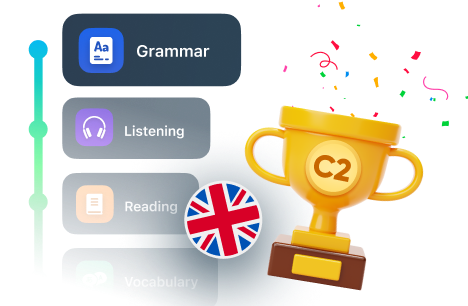
Present Perfect Continuous Tense: Explanation and Examples
The present perfect continuous is used to show that something started in the past and continues in the present.
To understand the present perfect continuous tense, we need to break it down. Firstly, the present perfect shows that an action occurred in the past and has a link to the present tense. Continuous tenses are actions that take place for a certain amount of time. The present perfect continuous is therefore used to show that something started in the past and continues in the present.
What is the present perfect continuous tense?
A present perfect continuous sentence shows that an action started in the past and is still happening right now in the present moment or that it started in the past and has continued on and off up until the present time.
Present perfect continuous tense formula
The formula for the present perfect continuous is:
To use this tense, you need to be familiar with present participles. A present participle is the root of the verb plus -ing, for example, “walking,” “dancing,” or “running.”
Present perfect continuous tense sentences
Now we’re going to break down a few sentences to see why the present perfect continuous is used instead of other tenses.
I have been training for this race for 8 months.
This person started training in the past, 8 months ago, to be precise. They have continued to train for the last 8 months and still train regularly now.
I’ve been cleaning my house all morning.
In this example, the subject started cleaning at the start of the day and continued up until the point of speaking, when they were still cleaning.
I’ve been reading about climate change to try and educate myself.
The reader started reading prior to the moment of speaking and hasn’t finished reading about climate change yet. They are not reading at this exact moment, but they continue to read on and off in the present day.
Examples of the present perfect continuous tense
He has been painting the wall for over an hour and still hasn’t finished.
We’ve been driving for ages, I hope we’re nearly there.
They haven’t been studying, they’ve been watching TV.
She’s been working on her latest invention for the past 3 months.
You’ve been writing all morning, why don’t you take a break?
Recently, I’ve been exercising more and eating more healthily.
The baby has been drooling a lot. Lately, he must be teething.
Present perfect continuous tense helpful hints
You may notice words commonly used alongside the present perfect continuous tense, such as recently, lately, for, and since.
Some verbs cannot be used in the progressive form, meaning we cannot use them in the present perfect continuous tense. Non-continuous verbs include verbs relating to senses, emotions, thinking, and abstract verbs, among others. For these verbs, we must use the present perfect tense instead.
Incorrect: I have been loving him for a decade.
Correct: I have loved him for a decade.
Incorrect: I’ve only been owning this house for 6 months.
Correct: I’ve only owned this house for 6 months.
“Be” as a main verb is non-continuous, not to be confused with “be” as an auxiliary verb.
Incorrect: I have been being sad for hours.
Correct: I have been sad for hours.
Incorrect: She has been being late to every class recently.
Correct: She has been late to every class recently.


















